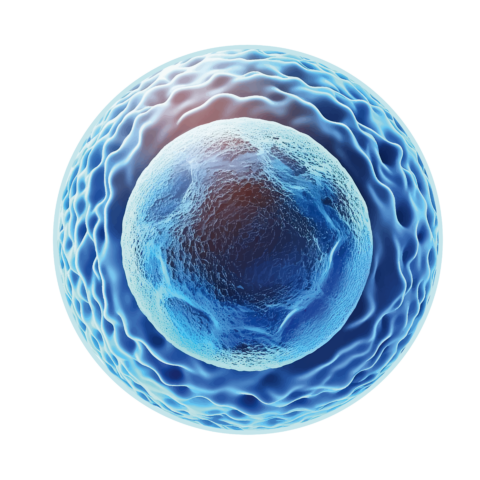MBST® is designed to stimulate the cells of damaged tissue, promoting regeneration and healing, reducing pain, and helping you return to an active life more quickly.




The body cannot always heal damage on its own. If its natural healing abilities aren’t enough and the injury is too severe, surgery may be necessary. However, surgery is just the first step in the recovery process.
Although modern surgery is as minimally invasive as possible, any operation results in some tissue being affected, and this tissue must heal in order to regain its function.
A quick healing process, supported by healthy tissue, an active metabolism, and early mobilisation, can improve the outcome of surgery.
For a longstanding complaint, there is often a lengthy period of waiting and planning before surgery. This allows time to assess whether pre-existing conditions pose specific risks and to make appropriate preparations for the procedure.
This also applies to joint replacement surgery, for example. Fragile bones due to osteoporosis can worsen the initial condition, potentially affecting the surgical outcome. Prostheses may also loosen more easily in cases of low bone density.1
Studies show that prosthesis loosening is one of the reasons why one in five patients are unhappy with their knee prosthesis.2 Increasing bone density before surgery could be helpful. MBST® magnetic resonance therapy is already being used by medical professionals to treat osteoporosis with this goal in mind.
Various complex internal processes work together to repair tissue damage after invasive procedures. However, wound healing disorders, post-surgical infections, and inflammation can disrupt or slow down these natural healing processes.
The sooner post-surgical pain subsides and the tissue heals, the sooner the patient can begin rehabilitation and regain their independence in daily life.
After joint replacement, successful rehabilitation is essential for mobility and the overall outcome of the surgery. For athletes, quick and sustainable healing is equally important to minimise downtime and return to their sport as soon as possible.
MBST® aims to promote the body’s natural regenerative potential, which is essential after surgery. By stimulating cells, MBST® encourages several biophysical processes within the cells.3-7
This may activate natural repair processes to promote the regeneration of healthy tissue and support wound healing.
Scientific studies, conducted in collaboration with various universities, confirm the positive effects of MBST® on pain signalling pathways and inflammatory reactions.3,4,6
Patients with a new artificial joint who received additional MBST® treatment after surgery were able to move the operated knee more easily six months later, compared to those who only received conventional aftercare. Furthermore, noticeable improvements began early after surgery.8

MBST® aims to support the body’s natural regeneration processes directly at the cellular level.

Targeted cell stimulation encourages several biophysical processes within the tissue, which may promote regeneration and tissue development.

After surgery, MBST® is designed to promote healthy conditions in the tissue, allowing the body’s natural healing processes to proceed without interruption and accelerate recovery.
MBST® is a certified medical product used only in the medical field. It’s offered by practices, clinics, and centres as part of their treatment options to ensure you receive the best possible care for your condition.
The TÜV-certified manufacturing process ensures the quality, safety, and reliability of the MBST® therapy worldwide.

There have been no reported side effects of MBST® therapy in more than 20 years of application and about 2 million hours of treatment.
After surgery, MBST® is designed to support the body’s natural wound healing processes. There are no known interactions with medications or other treatment methods. Therefore, all other treatments can and should continue as prescribed by your doctor.
When pre-existing conditions and surgery-related risks are known, it can be helpful to create favourable healing conditions. For example, prosthesis loosening is a known potential issue with artificial joints. Osteoporosis can damage the bone structure and interfere with the integration of the new joint. In such cases, increasing bone density before surgery may be helpful.
1 https://gelenk-klinik.de/hueftgelenk/hueftoperation/hueftprothese-und-osteoporose.html | 2 https://www.aerzteblatt.de/nachrichten/83545/Jeder-fuenfte-Patient-mit-seiner-Knieendoprothese-nicht-zufrieden | 3 Steinecker-Frohnwieser et al. 2014, J. Orthop. Rheum., 9/2014 | 4 Steinecker-Frohnwieser et al. 2018, Clin Exp Rheumatology 36, 294–301 | 5 Thöni et al. 2021, Chronobiology International, DOI: 10.1080/07420528.2021.1910288 | 6 Steinecker-Frohnwieser et al. 2021, Int J Molecular Sciences 22, 5959 | 7 Mann et al. 2022, frontiers in cellular neuroscience 16, 859545 | 8 Randomised-controlled PMCF study regarding the efficacy of the application of MBST® magnetic resonance therapy in post-surgical setting after TEP implantation, Intermediate analysis, Dresden, 2024
You are currently viewing a placeholder content from Google Maps. To access the actual content, click the button below. Please note that doing so will share data with third-party providers.
More Information